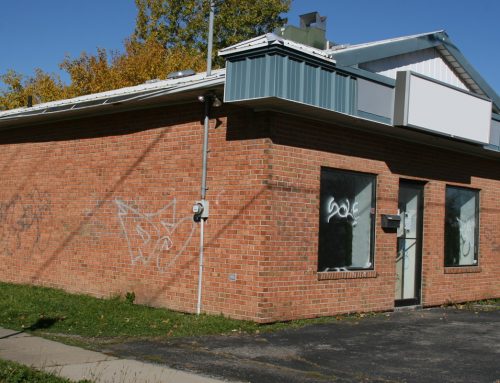[button_link style=”green large” url=”https://www.livinginniagarareport.com/wp-content/uploads/Living-In-Niagara-report-2011-Economic-Development-Poverty-and-Prosperity-in-Niagara.pdf”]Click here to download a PDF of the summary version of this sector.[/button_link]
Investing in economic development and reduction of poverty in a region is a wise strategy to help individuals, companies and families to prosper. Mobilizing assets, while effectively identifying and addressing needs will strengthen approaches to enhancing region-wide prosperity. The gap between the rich and poor is widening and deepening in many Canadian communities, including Niagara. Inequities and poverty are evident, with related negative impact for all citizens – significant costs in terms of human lives, unrealized potential, and loss of real dollars in the economy. The level of poverty, child poverty, low income, unemployment and homelessness in a region affects the health and well-being of individuals, families, businesses, government, and society as a whole. Niagara cannot afford the underutilization and non-inclusion of citizen assets that result from poverty. Collaborative efforts to ameliorate poverty involve changes in policy as well as initiatives to address inequities, adequate income levels, and increased employment opportunities.
What we are doing well…
Following the 2007 release of the report: “A Legacy of Poverty? Addressing Cycles of Poverty and the Impact on Child Health in Niagara Region”, the Region of Niagara began investing $1.5 million annually to help those living in poverty. Beginning in 2008, 55 different agencies were funded to deliver 136 projects. Goals of the Niagara Prosperity Initiative Advisory Committee include: dispelling the myths about living in poverty; improving collaboration and actions in poverty reduction efforts by all stakeholders; and engaging and including all individuals in the community. Shelters, food banks and services throughout the region are dedicated to supporting those in need. Niagara Region’s Community and Social Services Department offers financial assistance, Ontario Works benefits, and subsidized housing and day care. Groups have been established to focus on issues of homelessness and the integration of new immigrants into the region. Work is underway to provide a Niagara perspective on the Ontario Partnership Project finding, that the ‘for social profit’ sector is a $50 billion driver in Ontario’s economy.
By working together, we can improve economic prosperity in Niagara
The gap between high and low income earners in Niagara is steadily growing. We have little to cheer about when a large percent of Niagara’s children and families live below the poverty line, and struggle to have necessities of shelter and food. The statistics are made up of real people in our midst who face daily barriers to keeping their housing, finding work, raising families and eating well. There are several areas across our region where levels of unemployment, low income and poverty are higher than average. A closer look reveals that within these areas, there is inequity in the way populations experience housing, health, education, income and unemployment. To make our region robust, inclusive, sustainable and liveable for everyone, it is important to address the underlying issues that contribute to poverty. Strengthening the sustainability of core human services and their inter-connective links will be an important step. Efforts to strategically address Niagara-wide economic issues will improve prosperity for all.
Emerging Activity
- A unique Niagara Neighbourhood Mapping tool has been developed and used to measure the impact of neighbourhood action initiatives.
- Work is underway to better coordinate, integrate and strengthen regional economic development strategies.
- Awareness is building that effective economic development in Niagara needs to recognize linkages between, and magnify strengths of both private enterprise and the ‘for social profit’ sector.
Suggested Action Steps
that emerged from the data, and discussions with community expert opinion leaders:
- Adopt an action plan that recognizes that poverty is complex and its amelioration requires a system of approaches, both at the macro (regional) level and micro (neighbourhood) level.
- Focus on policy change and infrastructure improvements to ensure a living income above the poverty line for people receiving social assistance. Align this safety net with current realities of labour market and work trends.
- Base community-wide dynamic planning on tracking and analysis of the 100 indicators of poverty as identified in the report “A Legacy of Poverty? Addressing Cycles of Poverty and the Impact on Child Health in Niagara Region“.
- Stabilize commitments to child care and core human services for people living in poverty in Niagara.
- Structure government response to poverty reduction on the basis of prevailing evidence, community involvement and ideas.
- Link economic growth and development strategies to community assets such as: adequate, safe and affordable housing, quality employment, access to health care services, education, and transportation.
- Develop ways to include the perspectives and utilize the talents and contributions of those living in poverty.
- Extend entrepreneurial and innovative thinking to human services planning and delivery.
- Develop new leadership approaches and innovative ideas for prosperity development in Niagara.
- Support initiatives to build linkages between private enterprise and the ‘for social profit’ sector.
[call_to_action title=”Expert Opinion Leader Rating” tag_line=”Between – In dire need of corrective action
AND of concern, needs attention.” button=”1—2″ link=”JavaScript:alert(‘Between – In dire need of corrective action
AND of concern, needs attention.’);”]








